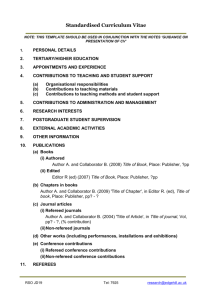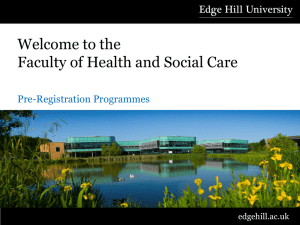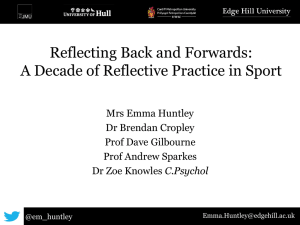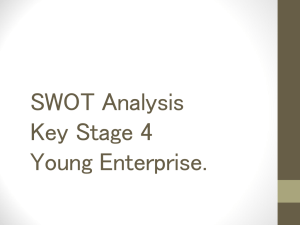Alison Mackenzie - University of York
advertisement
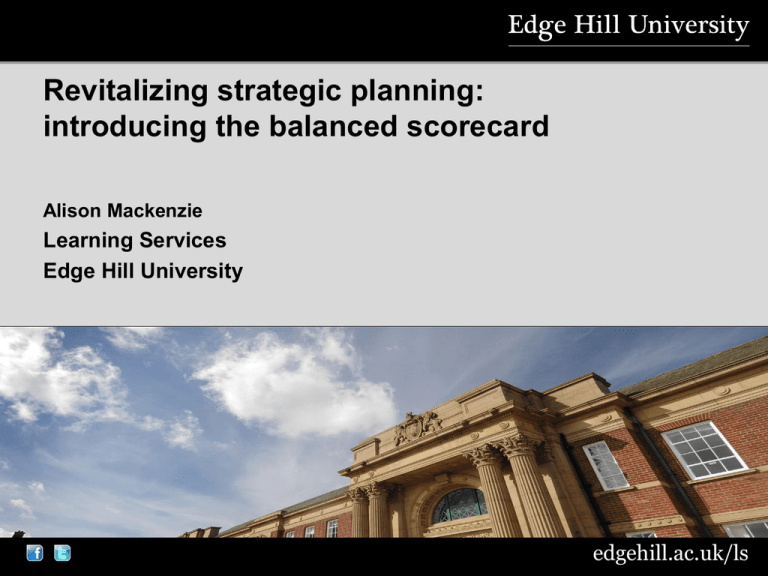
Revitalizing strategic planning: introducing the balanced scorecard Alison Mackenzie Learning Services Edge Hill University edgehill.ac.uk/ls Learning Services Staff: 123 Divisions: Academic Liaison and Support (including support for student with a SpLD); Customer Services; Information Resources; Media & ICT support; Learning Technology Development. Distribution: Located in a number of buildings across campus and NW region. edgehill.ac.uk/ls Background & Context 2005/6 Changes to organisational structure New divisional and team structure introduced SWOT analysis used as a means of critical reflection Individual performance reviews- demonstrated excellent delivery on objectives BUT SWOT analysis lacked criticality Insufficient external scanning Lack of performance measurement/ lack of data Evidence…what evidence? edgehill.ac.uk/ls Aims Teams •Improved awareness of competitive impact •Encouragement of greater autonomy and ownership of priorities •Development of robust evidence base •Target individual/team development using SMART objectives Service •Planning informed by a robust evidence base •Challenge status quo – create opportunities for creative problem solving •Stretch individuals to work beyond their comfort zones •Development of higher level transferable skills edgehill.ac.uk/ls Drivers for evidence based practice University introduced new strategic plan 2008-11 Learning Services: To be ahead of the game (or as good as…) To inform our operations, developments and continuous improvement cycle To support funding bids/additional resourcing and services To prove our ‘worth’ – value for money, our importance to the University To measure our impact on the student experience edgehill.ac.uk/ls Local adaptation of the BSC Cost effectiveness /VFM Internal efficiencies Learning & Innovation Customer focus edgehill.ac.uk/ls Perspective 1 internal workflows, procedures, communication within the team and with other teams/individuals across and beyond the service designed to help you maximise the deployment of individual staff skills and expertise Internal efficiencies Customer focus edgehill.ac.uk/ls Perspective 2 Staff development, review of roles & responsibilities, analysis of skills gaps, pilots of new initiatives, new approaches to existing services Learning & innovation Customer focus edgehill.ac.uk/ls Perspective 3 Budget, existing contracts, service level agreements, internal consultancy, staff roles & responsibilities Cost effectiveness /vfm Customer focus edgehill.ac.uk/ls Lead perspective Feedback and assessments, satisfaction ratings, service quality, access and uptake, alignment with stakeholder priorities, relationship building Customer focus edgehill.ac.uk/ls Approach Introduction (Managers) Preparatory guidance / examples Local organisation Whole team approach SMART objectives Local interpretation of the BSC edgehill.ac.uk/ls Feedback on process Initial introductory sessions essential to developing an understanding of the general principles Managers adopted different approaches Varying levels of analysis Successful engagement dependent on understanding of BSC and performance measurement more generally Communication/ acceptance of change variable across teams Capture of outputs/presentation of objectives open to local interpretation edgehill.ac.uk/ls Critical success factors Managers: Preparation and planning is key Need to understand BSC as planning /performance measurement tool Advance documentation circulated to teams manage expectations Use data/evidence to inform decisions Team participation Focus on customer Developments informed by data/evidence Team members can/do influence how objectives are delivered Individual responsibilities assigned edgehill.ac.uk/ls Thank you



